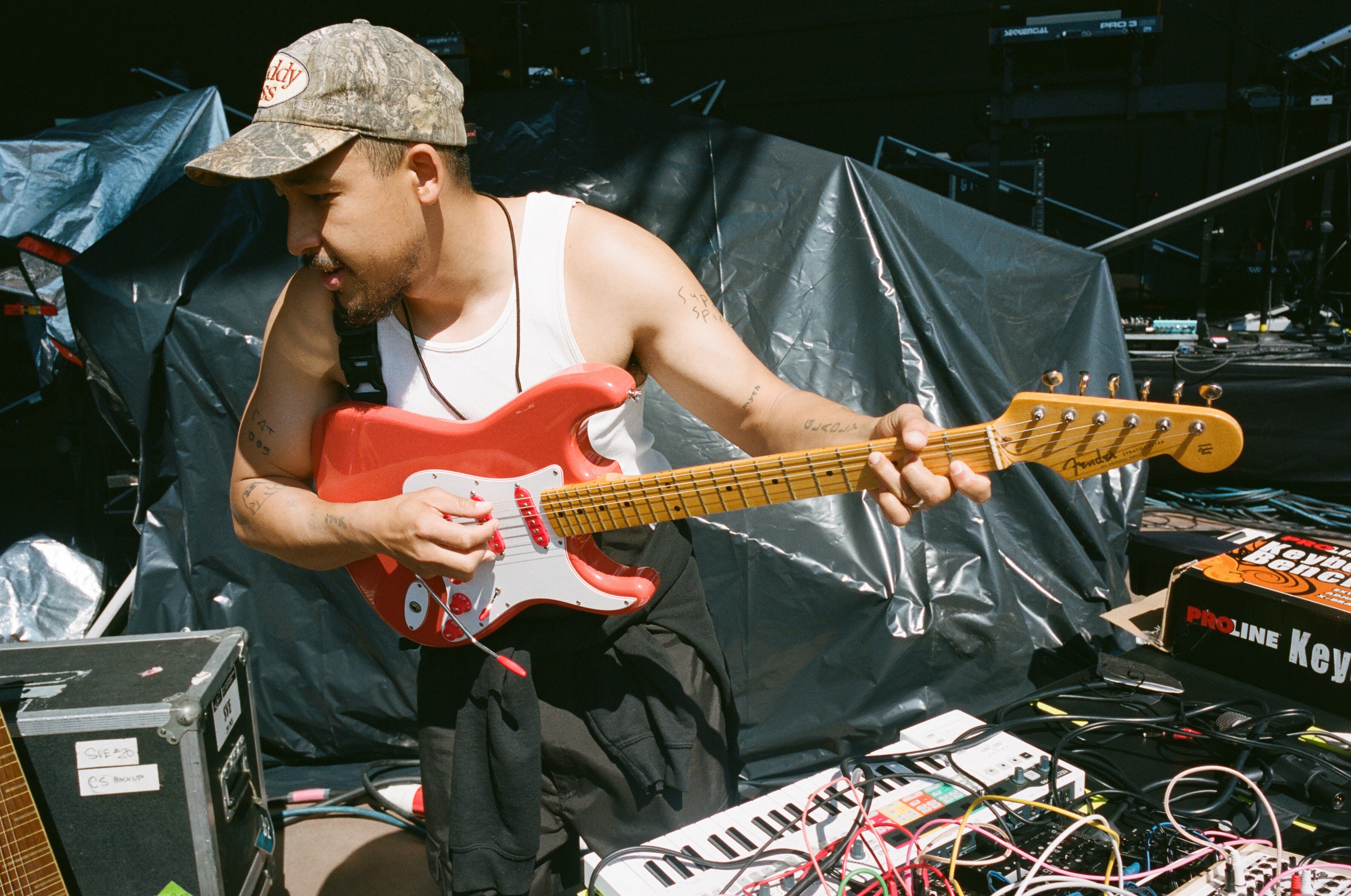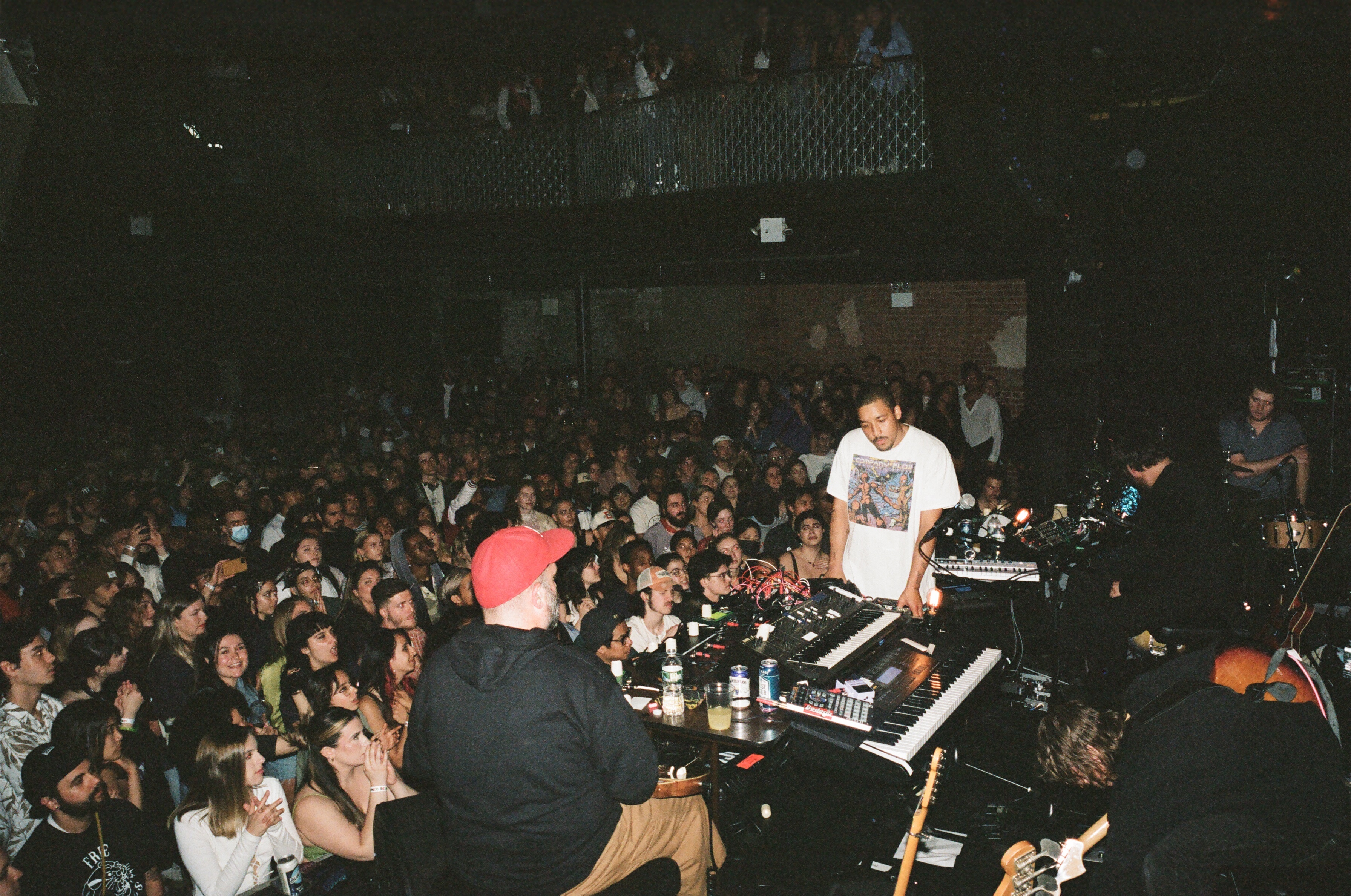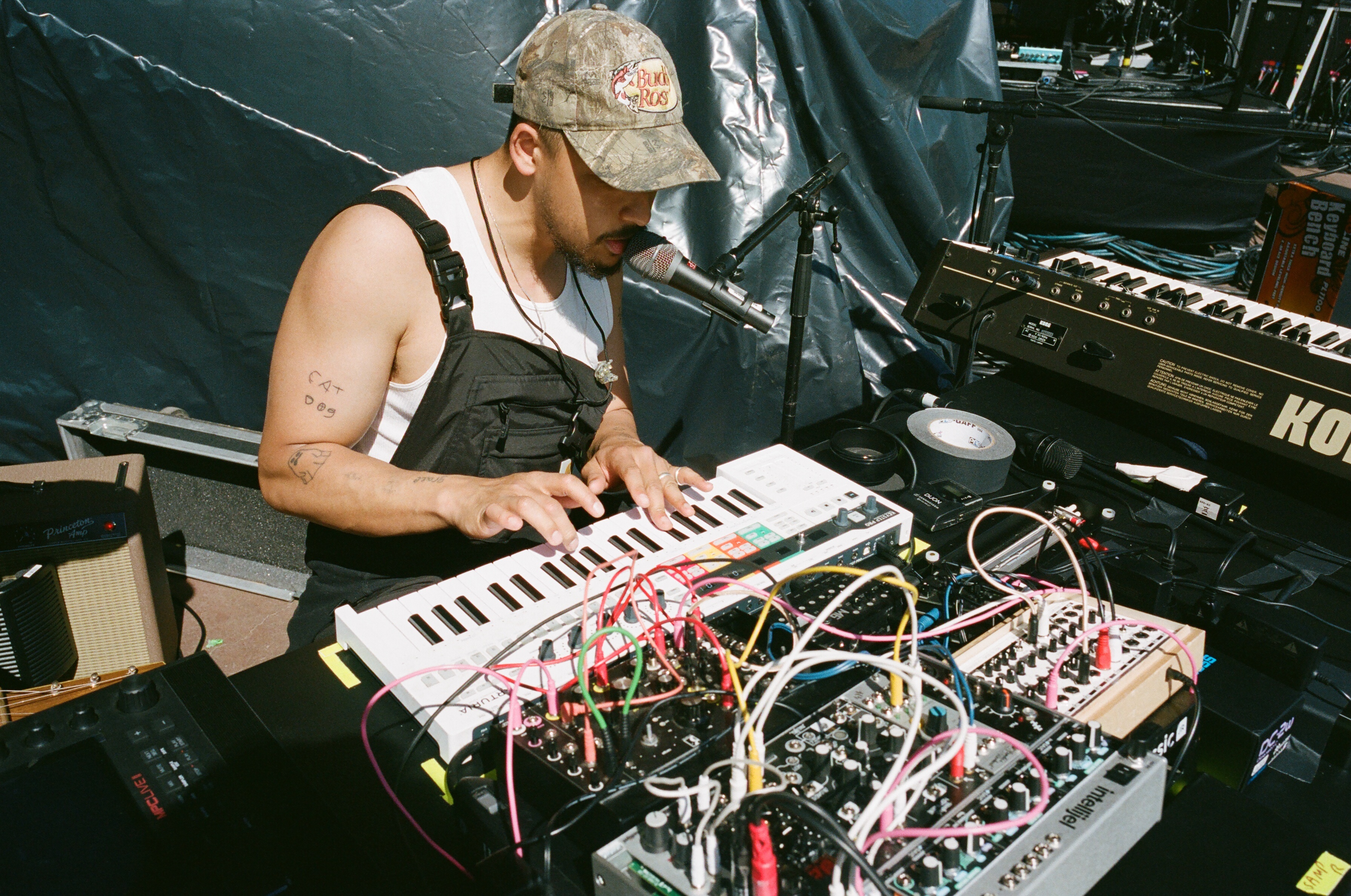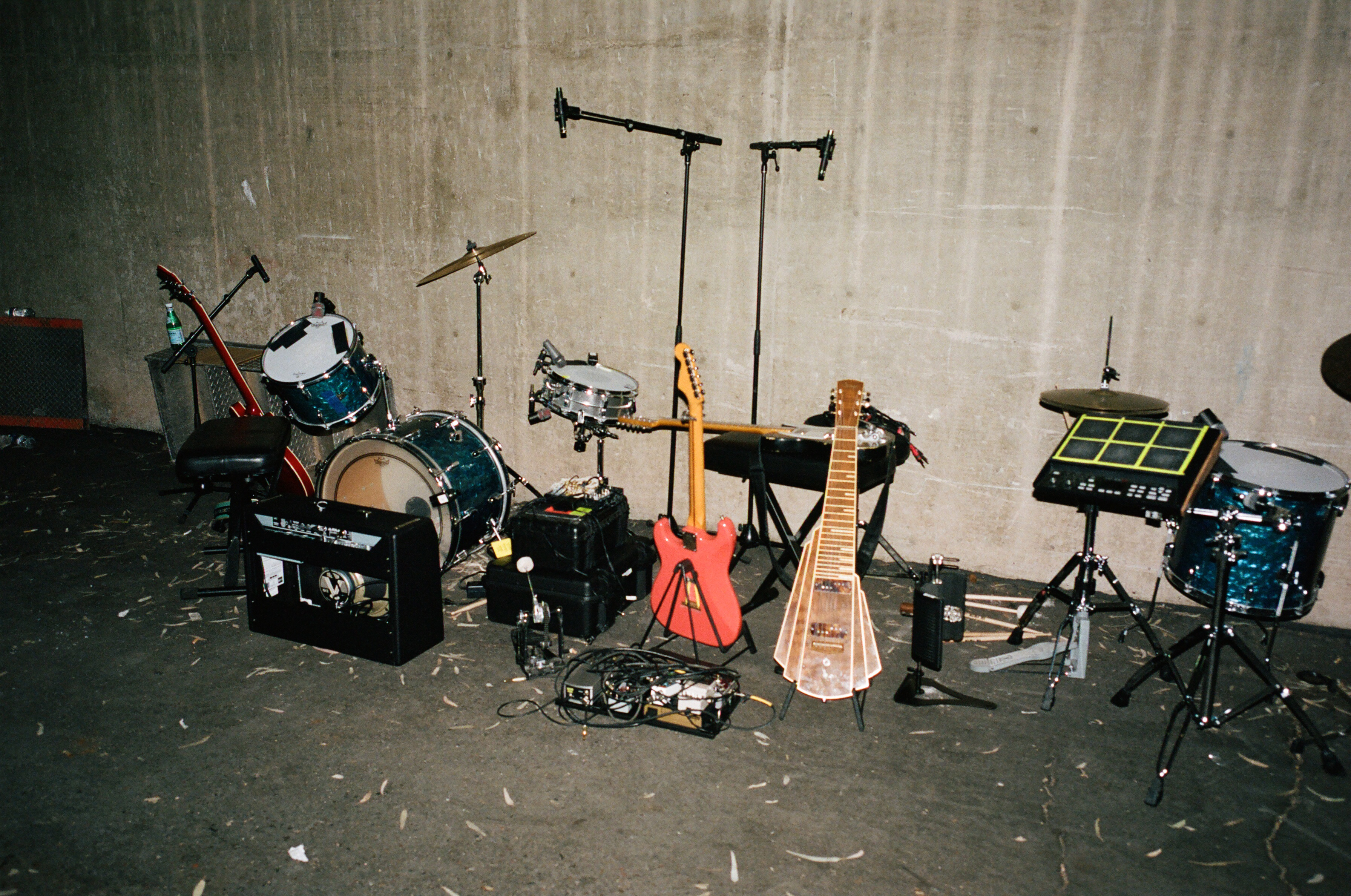"The omni polar pattern, that's the sound of the record," Dijon says, just before our interview ends. It was a quick summation tacked onto a lengthy chat about Absolutely, his full-length solo debut.
Omni here refers to the omni-directional setting on certain microphones. When selected, it lets a mic capture the sound of a whole room, in a 360° sonic image, as opposed to just one vocalist or instrumentalist at close-range.
In rooms that sound "good," like those found in professional, acoustically treated studios, omni mics are used all the time. In home studio setups, like the ones Dijon used to record most of Absolutely... not so much. "Everybody's so scared of them," he says.
Set a mic to omni to record in your apartment or basement, and you'll hear why. It'll pick up all the noises your mind naturally tries to reject: the creak of the floor as you shift your feet, a neglected drum's rattling snares, harsh echoes that bounce and reflect back off your walls.
So using them in improvised studios is a recipe for an unhinged, ramshackle sound, which is exactly what Dijon did, and exactly the sound he captured. Absolutely sounds like its own creative atmosphere, like friends caught up in the moment, creating songs and, somehow, perfect arrangements on the fly.
But, like the makeshift practice space that reveals itself to be a sound stage in the music videos made for the album's release, Dijon's room sound isn't one room at any one time. It's an amalgamation of sessions, built up and edited down, a refined representation of many freely recorded moments.
Dijon created Absolutely throughout 2020 with a cast of collaborators, including Mike Gordon (aka Mk.Gee), Noah Le Gros, Jack Karaszewski, and Andrew Sarlo (producer for Big Thief, Nick Hakim, Bon Iver, and others).
Often the songwriting process and recording process happened simultaneously, using what they had at their disposal: various guitars, keys, an Elektron Octatrack loaded with breakbeats, and just a bit of a Dijon's Eurorack skiff, all recorded onto Ableton.
The mic, whose omni setting proved so crucial to the proceedings, was an AKG C414.
"We made the first half of the record in my spare room in Highland Park, and I can tell you, every vocal besides 'The Dress' was done on an AKG C414 and run just through a [Heritage] 1073, and that's it. We learned it with 'Big Mike's,' but I always made sure the polar pattern was omni and I would always make it as hot as possible without it initially [clipping]."
"So, the reason a lot of the music sounds so thin is because a lot of it was done actually picking up room, in a very boxy room," he says. But to tame that boxiness, they would have to take out most of the mids with a graphic EQ.
By the way Dijon describes it, ideas were created and captured on the spot.
"We learned really quickly that the only fun way to make music was whatever you bring has to be able to immediately be recorded, that's it. So, you take limitations of an interface input and just not thinking too much about... It's everything that's counterintuitive to engineering, which is not trying to make them sound as good as possible before you record. It's just too much to think about," he says. "So then after the song it's like, 'Oh, I like this tune.' You just have to shape now what it is, as opposed to trying to fix it in any way."
"Rodeo Clown" and "Big Mike's," both keepers, were made in this fashion on the same day.
Kicking off the album, "Big Mike's" begins with feedback swells. Dijon's vocals come in gently, but the melody quickly becomes dynamic, swaying and swelling while the band—or what sounds like a backing band—tries to keep up with it.
This dynamic ebb and flow, which is heard all over the album, seems to have come from two things: the natural interplay between Dijon's voice and Mike's guitar, and their shared aversion to striking a full chord.
"You won't really catch us strumming much. It's a lot of jumpy picking and things like that," Dijon says. So when Dijon sings a note and Mike picks a few more, it's like they're leading each other onto the next.
Of Mike's playing, Dijon says, "It's these very almost manic rhythmic jumps that force you to understand which options you have cadence for, and, I don't know, there's funk in there, there's also something very different in there that I think he might be creating or transmitting from an alien planet, but there's some familiar touchstones. To me, the thing I hear the most is his rhythm. He's so spare that I only pick up on the rhythmic spaces, that's it."
Whether feedback, quick stabs of slide guitar, or some other surge of noise, the album is marked by "gestural explosions," as Dijon calls them. They punctuate the dynamics that the other instruments and voices are already bringing to the table. The effect—among the slinky lines, the genre-hopping tracks, and these left-field sounds—is that a listener can never be quite sure what they're going to hear next.




Since Jack Karaszewski was around for much of the recording, he was able to bring out even more of these moments while mixing the album.
"I think Jack just understood that we wanted to create a new fidelity for ourselves. Because it's very, very strange to record stuff as poorly as we do and then expect to either re-track it at a studio or have somebody who wasn't a part of the record manipulate it. It makes no sense," Dijon says. "So we kind of opted for varying fidelities."
The mixing process didn't include much more than a few key plugins, using Ableton on Jack's PC. The most important thing was selecting which sounds made the cut.
"We just threw in a lot of things that already existed within the sessions, and increased them, rode the volumes a little bit, or tried to learn how to use compressors and stuff for the first time," Dijon says. "Even the mixing philosophy was an extension of how we recorded it, which is just not really a big deal. Don't try to enhance what wasn't really enhanced to begin with."
Dijon and his band took the sounds on tour, opening for Bon Iver for a time. And on stage, they exaggerated the strange dynamism of the songs even further.
"On tour, we actually ended up experimenting with actual, literal gestural things," Dijon says. "I would have some noise that I created or whatever through a VCA that only opened if I touched a sensor strip. So, it would actually be like if I felt like opening it, I could do it there, just creating harsh noise sweeps in between my own phrasing. It just became a little bit more musical way to get disruptive."
While Jack has an elaborate Eurorack rig in his live setup, "where he uses his skiff as a pedalboard," Dijon has been exploring Eurorack himself for the past four years or so, though there isn't a huge deal of it that made it onto Absolutely. There's a bit of Make Noise Strega on "Talk Down" and a looped pluck pattern originating from a Mutable Instruments Rings is the foundation of "Did You See It?"
The last song he made for the record, "Did You See It?" may just point to what's coming next from Dijon. "For me, the entire song was written based off of that completely generative arpeggiation, and then it was a huge, exciting, fun personal achievement," he says.
While Eurorack passages may begin as pure sonic exploration, he's a songwriter and producer at heart, so he's looking for ways to capture eight- or 16-bar moments that he could then sample and turn into songs.
"I'm actually trying to figure out how to do really small moments that actually just inform songwriting," he says. "I come from the school of being obsessed with Pharrell and Timbaland, where you can't logically sit down with a guitar or a piano and write the music that they wrote. It's all informed specifically by the pattern they created. When you do it, every melodic choice is now dictated by that palette."
Like reacting to a spur-of-the-moment and slightly out-of-tune piano line, the vocal melodies and, ultimately, songs that he could write from a modular sequencer may not have ever happened any other way.
"You have the most fucked up rhythm and you're forced to try to interpret a song around it somewhere," he says. "It doesn't always work, but it's a more worthy challenge than stacking yourself up against Bob Dylan and trying to write a perfect song on guitar. It's just beat in my opinion."
To get that new way of working, he's been picking up some new tools to try. So now, along with his Octatrack and Analog Four, he has an MPC he can use to sample his Eurorack.
"I'll trust that lyrics and stuff will come at some point in time, but trying to get familiar enough with one workflow where it becomes something I rely on pretty deeply, so when I do have ideas, I can very quickly go into that specific workflow and force myself to try to make an idea out of that," Dijon says. "I've just been collecting sounds now and collecting sounds and root notes that maybe I'll chop up and try to start songs."
